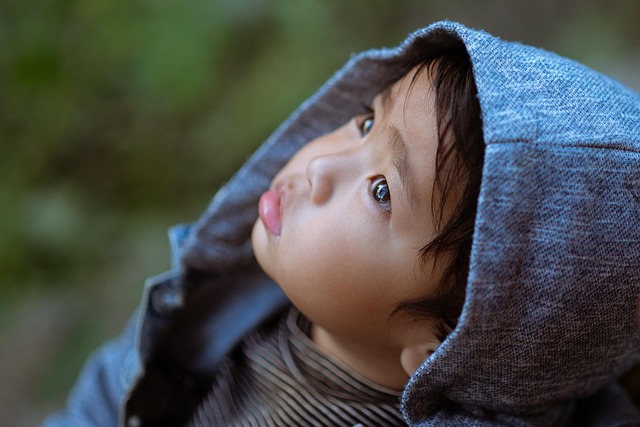Oregon boasts a robust network of child welfare advocacy organizations dedicated to protecting and supporting vulnerable youth. Through a combination of education, direct services, and policy reforms, these groups address systemic issues like abuse, neglect, and exploitation. Key initiatives include public awareness campaigns, evidence-based practices, mental health services, stable housing, and community partnerships. By collaborating with local governments, policymakers, and community leaders, these organizations drive policy changes, secure funding, and raise awareness to create a safer, more nurturing environment for all Oregon children.
“In Oregon, child welfare advocacy organizations play a pivotal role in ensuring the well-being and rights of young residents. This article delves into the intricate world of these groups, highlighting their key roles and achievements. From understanding the broader landscape to exploring specific initiatives and effective strategies, we examine how these organizations advocate for children’s rights.
We’ll also analyze community and government collaborations, the impact of advocacy programs, and what the future holds for Oregon’s child welfare movement.”
- Understanding Child Welfare Advocacy in Oregon: An Overview
- Key Organizations Leading the Charge for Children's Rights
- Advocacy Initiatives: Protecting and Empowering Oregon's Youth
- Strategies for Positive Change: What Works in Child Welfare
- Supporting Systems: Community and Government Collaboration
- The Impact and Future of Child Welfare Advocacy Programs in Oregon
Understanding Child Welfare Advocacy in Oregon: An Overview

Child welfare advocacy in Oregon is a vital network of organizations and initiatives dedicated to ensuring the well-being and protection of children across the state. These advocacy groups play a crucial role in promoting strategies that prevent abuse, neglect, and exploitation while providing support systems for vulnerable youth. Oregon’s unique landscape has shaped its child welfare system, with diverse communities requiring tailored approaches to meet the needs of all children.
Advocacy programs here focus on various aspects, including education and awareness campaigns to dispel myths about child welfare, direct support services for families at risk, and policy changes to improve the overall system. These efforts are essential in addressing systemic issues and advocating for policies that prioritize children’s rights, safety, and long-term success. Oregon’s commitment to these advocacy initiatives ensures a robust support structure for its youngest residents.
Key Organizations Leading the Charge for Children's Rights

In Oregon, a robust network of child welfare advocacy organizations is dedicated to protecting and promoting the rights and well-being of children. Key players like Child Welfare League of America (CWLAA) Oregon chapter lead the charge by advocating for policy changes and enhancing existing strategies. These organizations drive innovation in child welfare through research-backed initiatives, ensuring Oregon’s systems prioritize prevention, intervention, and long-term support for vulnerable youth.
They collaborate with local communities, government bodies, and other non-profits to develop holistic child welfare programs that address immediate needs while fostering resilience and self-sufficiency. Their advocacy efforts are supported by dedicated volunteers and professionals who share a collective vision: to create a safer, more nurturing environment for every child in Oregon.
Advocacy Initiatives: Protecting and Empowering Oregon's Youth

Child welfare advocacy organizations in Oregon play a pivotal role in protecting and empowering the state’s youth. These initiatives are driven by a collective effort to address systemic issues affecting children and families, focusing on both prevention and intervention strategies. Through robust advocacy programs, these organizations work tirelessly to ensure that every child in Oregon has access to quality care, education, and opportunities for a bright future.
The advocacy efforts in Oregon are multifaceted, encompassing public awareness campaigns, policy reforms, and direct support services. By engaging with policymakers, community leaders, and the public, these organizations bring attention to critical child welfare issues. They lobby for evidence-based policies that promote safe and stable homes, improve mental health access, and strengthen family connections. Additionally, they offer valuable resources and programs that empower young people to make informed decisions, develop life skills, and overcome challenges, ultimately fostering resilience and self-sufficiency.
Strategies for Positive Change: What Works in Child Welfare

Child welfare advocacy organizations in Oregon employ a variety of effective strategies to drive positive change within the system. Advocacy initiatives focus on comprehensive approaches that address the multifaceted needs of children and families. These include supporting evidence-based practices, enhancing access to mental health services, promoting stable housing solutions, and fostering strong community partnerships. By collaborating with policymakers, service providers, and community leaders, these organizations advocate for policy reforms that prioritize prevention, early intervention, and long-term support for at-risk youth.
Oregon’s advocacy groups have achieved notable success through public awareness campaigns, legislative advocacy, and direct service provision. They leverage data and research to inform strategies, ensuring that interventions are tailored to the unique challenges faced by Oregon’s children and families. Through these collective efforts, child welfare advocacy organizations in the state work towards a future where all children thrive, with robust support systems in place to guide them through every stage of development.
Supporting Systems: Community and Government Collaboration

In Oregon, child welfare advocacy organizations thrive through robust community and government collaborations. These partnerships are instrumental in developing comprehensive child welfare advocacy programs that address a wide range of issues affecting children and families. Local governments play a key role by providing resources and support, while community organizations bring unique insights and grassroots initiatives to the table. This collaborative approach ensures that advocacy efforts in Oregon are not only responsive but also proactive, focusing on prevention and early intervention strategies.
Through these partnerships, advocacy organizations can effectively push for policy changes, secure funding for critical services, and raise awareness about child welfare issues. Such collaborations strengthen the support systems available to vulnerable children and families, ultimately improving outcomes and fostering a safer, more nurturing environment within the community. This unified front is a cornerstone of Oregon’s commitment to child welfare strategies that prioritize the well-being and future success of all its youth.
The Impact and Future of Child Welfare Advocacy Programs in Oregon

Child welfare advocacy organizations in Oregon play a pivotal role in shaping a brighter future for the state’s most vulnerable children. These initiatives not only address immediate needs but also advocate for long-term strategies to prevent systemic issues that contribute to child abuse and neglect. Through robust advocacy efforts, Oregon has witnessed significant improvements in child protection services, ensuring better outcomes for at-risk youth.
Looking ahead, the future of child welfare advocacy in Oregon promises innovative solutions and increased support. By leveraging technology, community partnerships, and evidence-based practices, these organizations aim to enhance service delivery and reach more families in need. With continued focus on prevention, early intervention, and durable family connections, Oregon’s advocacy programs are poised to revolutionize child welfare, fostering a safer and more supportive environment for all children to thrive.






